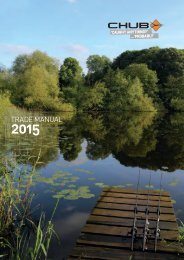CHAMPAGNE
This combination of weather influences makes for constant, moderate precipitation – a near-ideal pattern of rainfall that provides the vines with just enough water to produce quality fruit. Mean annual rainfall for the Champagne region as a whole is close to 700mm, ranging from 600mm to 900mm depending on the area.
This combination of weather influences makes for constant, moderate
precipitation – a near-ideal pattern of rainfall that provides the vines with just
enough water to produce quality fruit. Mean annual rainfall for the Champagne
region as a whole is close to 700mm, ranging from 600mm to 900mm depending
on the area.
You also want an ePaper? Increase the reach of your titles
YUMPU automatically turns print PDFs into web optimized ePapers that Google loves.
The special tirage stopper meanwhile allows minute quantities of oxygen to enter the bottle and small amounts of carbon<br />
dioxide to escape - in other words, the seal is not perfectly airtight. The choice of stopper is critical in determining the speed<br />
of the Champagne’s development.<br />
These two processes – autolysis and slow oxidation through the stopper – occur simultaneously in the course of maturation<br />
on lees. Together they encourage the development of tertiary aromas, slowly transforming the floral, fruity notes of young<br />
Champagne wines into the riper, jammier, nuttier aromas that are typical of more mature wines. Very old wines have a<br />
distinctively toasty bouquet, with a characteristic whiff of damp forest floor.<br />
Maturation on lees<br />
31

















